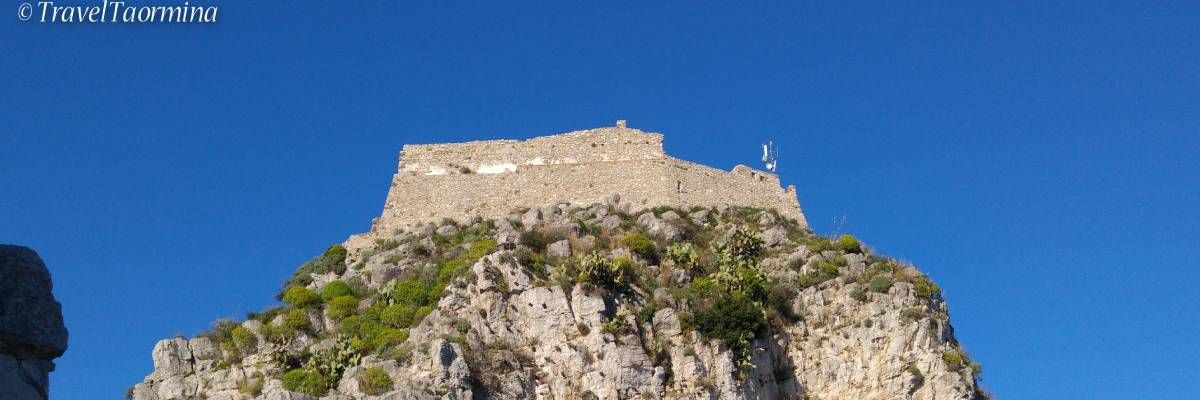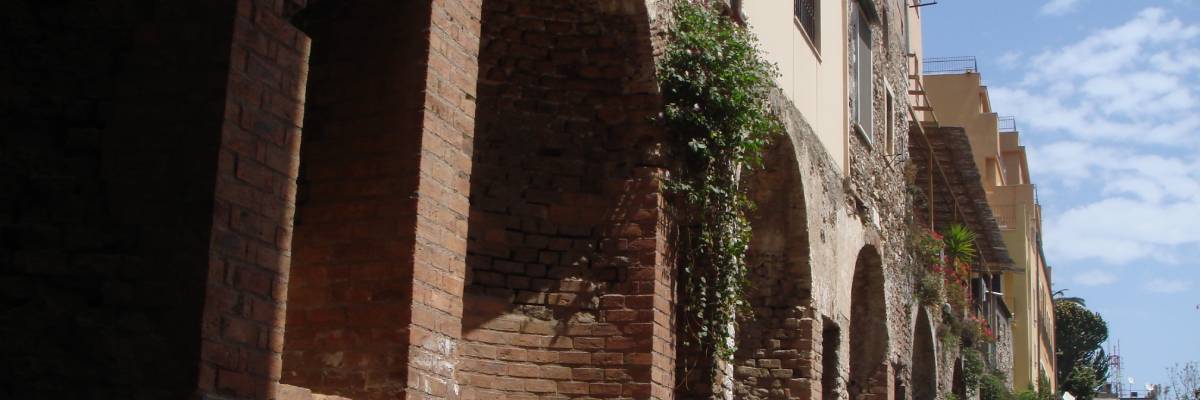Church of Varò in Taormina

The Church of Varò (Chiesa del Varò) is located at the end of a stairway that departs from Corso Umberto I, just after the Clock Tower.
The church was built by Cav. Blasio Corvaja in the late eighteenth century, and the work was finished by his brother Sigismondo at the beginning of the nineteenth century. Most probably the building was built on a pre-existing built by the Romano family.
A demonstration of this hypothesis in the church are located the tomb-mausoleum of Giovanni Romano Denti, who died in 1699, and the statues of San Gaetano and San Francesco di Paola that have the emblem of the Romano family.
The Church of Varò comes as a massive construction without a well-defined style. In the main facade there is the portal for which the threshold, jambs and lintel are made with Taormina stone; the portal is surmounted by a window with sill and jambs in stone of Syracuse.
In the east facade there is another portal, which is accessed via a short double staircase; this portal has the doorposts and lintel in pink Taormina marble. At the top, there are three windows with jambs and lintel semiarch in stone of Siracusa, the same style of the main front window.
In the back there is a small bell tower supported by two arches which are dominated by two fake brick arches. The tiny bell tower has an opening on the east façade, in which are housed two bells, while the north side has two arched windows, one of which houses a third bell.
In the past, the congregation of Varò was illustrious, and only those who possessed three-quarters of nobility could belong to it. The church houses the tomb intended for members of the congregation, which brings the following inscription: "A filo vita, a vita mors, a morte aeternitas Nemini parco. Mihi hodie, cras tib. Quid Superbis pulvis et cinis? Et dives, et fortis Veniunt ad funera mortis. An. Dom. 1776." Between the first and the second part of this epitaph is carved a skull in crossbones.
On the wall behind the main altar there is the papier-mache statue of the Madonna Addolorata. Above there is a fresco of the painter Vincenzo Tuccari, dated 1699; the fresco represents the triumph of the Cross, in which dominates the figure of St. Michael the Archangel, which is surrounded by a myriad of festive angels.
On a minor altar there was an old diptych (now in the Museum of Messina). The diptych is a tempera painting on wooden board divided into two parts, representing the Visitation of the Virgin Mary; this painting gives its name to the church of Varò, and it is a work of the painter from Messina Antonino Giuffrè.
In the back of the church there is an ancient crypt, perhaps from the early years of Christianity, which you have to cross to reach the stage where is situated the church organ. If the crypt really dates from that time, we must consider the Church of Varò as the oldest church in Taormina.
To the right of the main altar is the tomb of the Count Giovanni Romano Denti with the sleeping statue of Count, with the plaque that bears the following text: "DOMD Johannes Romano et Tooth tribunes militum Proprietate to Caroli regis Seconds Hispaniarum Catholic maiestate decoratus, ac seispo divinae Providentiae sibi Jesuxpi crucifixi, et Deiparae Dolorosissimae gratia favente filius always reputatus, it frugal suos prius recideret grssus et annos aeternos persaepe musing viventem if reddens hoc ante sepulcrum mortuus inde auxilio consequende finalis gratiae perenniter Viveret in coelo. Objit XI Agusti Ann. MDCXCIX Aetatis suae LVII. "
The church has a single nave, and today is is very much in demand by the couple for their weddings.
ADDRESS
Piazza del Varò
PHONE: +39 339 1259470 / 338 1833833
TIMETABLE VISITS
From 08:30 to 20:00.
RATES
Free entry.
Related articles
Saracen Castle

Palazzo of the Dukes of Santo Stefano

Naumachie


 English
English  Italiano
Italiano 
















